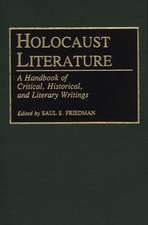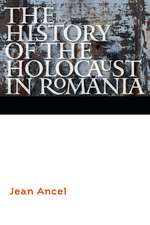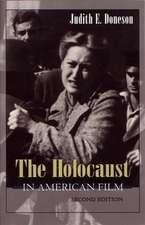Teaching the Holocaust: Practical approaches for ages 11–18
Autor Michael Grayen Limba Engleză Paperback – 18 mai 2015
This book, drawing upon the latest research in the field, offers practical help and advice on delivering inclusive and engaging lessons along with guidance on how to navigate through the many controversies and considerations when planning, preparing, and delivering Holocaust education. Whether teaching the subject in History, Religious Education, English or even in a school assembly, there is a wealth of wisdom which will make the task easier for you and make the learning experience more beneficial for the student.
Chapters include:
- The aims of Holocaust education
- Ethical issues to consider when teaching the Holocaust
- Using film and documentaries in the classroom
- Teaching the Holocaust through literature
- The role of online learning and social media
- The benefits and practicalities of visiting memorial sites
| Toate formatele și edițiile | Preț | Express |
|---|---|---|
| Paperback (1) | 372.84 lei 6-8 săpt. | |
| Taylor & Francis – 18 mai 2015 | 372.84 lei 6-8 săpt. | |
| Hardback (1) | 1003.43 lei 6-8 săpt. | |
| Taylor & Francis – 18 mai 2015 | 1003.43 lei 6-8 săpt. |
Preț: 372.84 lei
Nou
Puncte Express: 559
Preț estimativ în valută:
71.34€ • 74.68$ • 59.38£
71.34€ • 74.68$ • 59.38£
Carte tipărită la comandă
Livrare economică 31 martie-14 aprilie
Preluare comenzi: 021 569.72.76
Specificații
ISBN-13: 9781138791008
ISBN-10: 1138791008
Pagini: 214
Ilustrații: 7 black & white illustrations, 16 black & white tables, 1 black & white halftones, 6 black & white line drawings
Dimensiuni: 174 x 246 x 15 mm
Greutate: 0.38 kg
Ediția:1
Editura: Taylor & Francis
Colecția Routledge
Locul publicării:Oxford, United Kingdom
ISBN-10: 1138791008
Pagini: 214
Ilustrații: 7 black & white illustrations, 16 black & white tables, 1 black & white halftones, 6 black & white line drawings
Dimensiuni: 174 x 246 x 15 mm
Greutate: 0.38 kg
Ediția:1
Editura: Taylor & Francis
Colecția Routledge
Locul publicării:Oxford, United Kingdom
Public țintă
Postgraduate, Professional, Professional Practice & Development, and UndergraduateCuprins
1. What was the Holocaust? 2. Why teach about the Holocaust? 3. How should the Holocaust be taught? 4. What do students already know? 5. Using film in the classroom 6. Using literature in the classroom 7. Digital learning and new technologies 8. Visiting Holocaust sites 9. Comparing the Holocaust to other Genocides 10. Teaching in a multicultural society 11. Combatting Antisemitism 12. Dealing with Holocaust denial and distortion 13. Schemes of work 14. Lesson Plans 15. Teaching resources
Notă biografică
Michael Gray teaches at Harrow School, UK. He has a Ph.D. in Holocaust education and has published widely on the subject. He is a member of both the International Network of Genocide Scholars and the British Association of Holocaust Studies.
Descriere
Teaching the Holocaust can be a very challenging experience. What content should be included and what should be left out? How can film and literature be integrated into the curriculum? What is the best way to respond to students who resist the idea of learning about it?
This book, drawing upon the latest research in the field, offers practical help, advice and guidance on navigating through the many controversies and considerations when planning, preparing and delivering Holocaust education. Whether teaching the subject in History, Religious Education, English or even in a school assembly, there is a wealth of wisdom, which will make the task easier for you and make the learning experience more beneficial for the student.
This book, drawing upon the latest research in the field, offers practical help, advice and guidance on navigating through the many controversies and considerations when planning, preparing and delivering Holocaust education. Whether teaching the subject in History, Religious Education, English or even in a school assembly, there is a wealth of wisdom, which will make the task easier for you and make the learning experience more beneficial for the student.



























